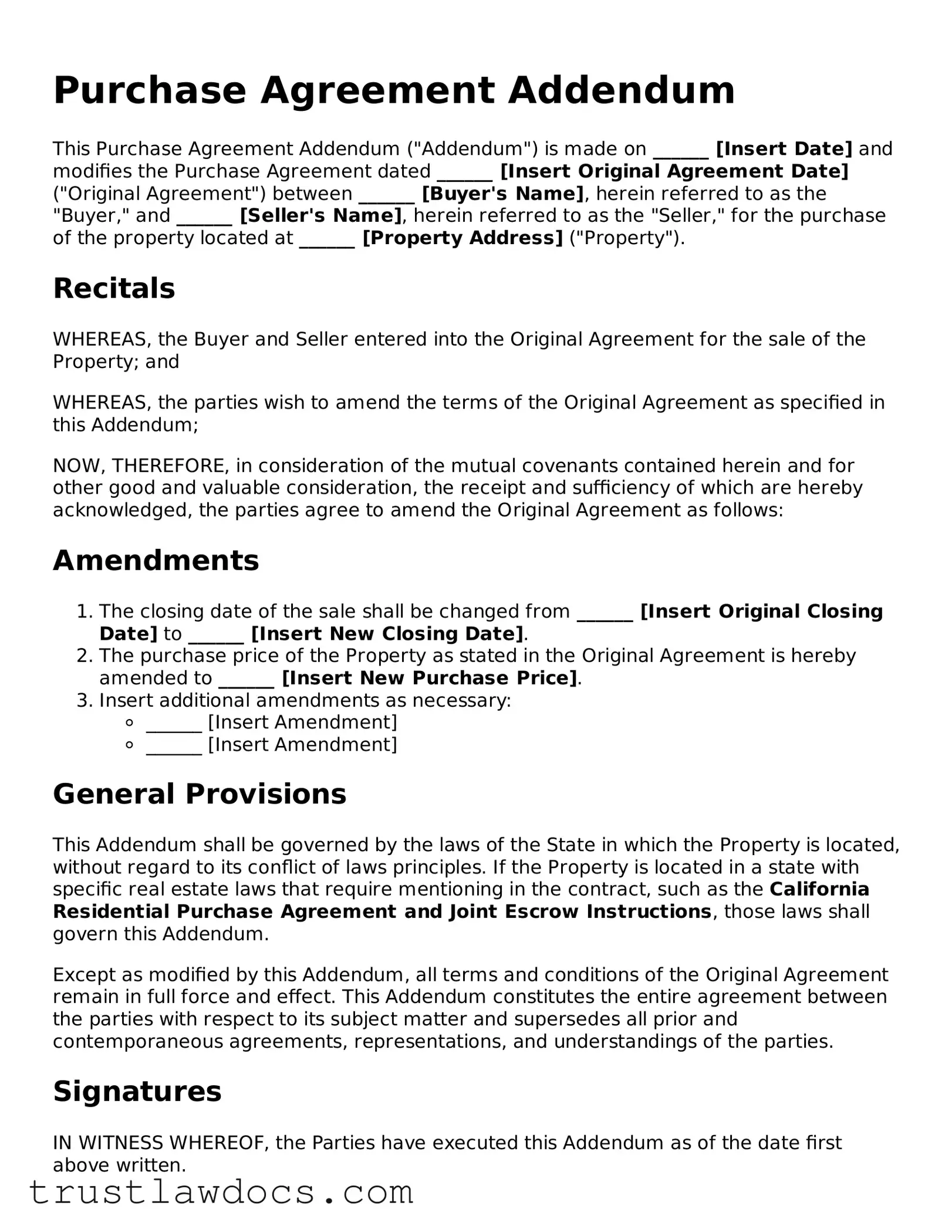Purchase Agreement Addendum
This Purchase Agreement Addendum ("Addendum") is made on ______ [Insert Date] and modifies the Purchase Agreement dated ______ [Insert Original Agreement Date] ("Original Agreement") between ______ [Buyer's Name], herein referred to as the "Buyer," and ______ [Seller's Name], herein referred to as the "Seller," for the purchase of the property located at ______ [Property Address] ("Property").
Recitals
WHEREAS, the Buyer and Seller entered into the Original Agreement for the sale of the Property; and
WHEREAS, the parties wish to amend the terms of the Original Agreement as specified in this Addendum;
NOW, THEREFORE, in consideration of the mutual covenants contained herein and for other good and valuable consideration, the receipt and sufficiency of which are hereby acknowledged, the parties agree to amend the Original Agreement as follows:
Amendments
- The closing date of the sale shall be changed from ______ [Insert Original Closing Date] to ______ [Insert New Closing Date].
- The purchase price of the Property as stated in the Original Agreement is hereby amended to ______ [Insert New Purchase Price].
- Insert additional amendments as necessary:
- ______ [Insert Amendment]
- ______ [Insert Amendment]
General Provisions
This Addendum shall be governed by the laws of the State in which the Property is located, without regard to its conflict of laws principles. If the Property is located in a state with specific real estate laws that require mentioning in the contract, such as the California Residential Purchase Agreement and Joint Escrow Instructions, those laws shall govern this Addendum.
Except as modified by this Addendum, all terms and conditions of the Original Agreement remain in full force and effect. This Addendum constitutes the entire agreement between the parties with respect to its subject matter and supersedes all prior and contemporaneous agreements, representations, and understandings of the parties.
Signatures
IN WITNESS WHEREOF, the Parties have executed this Addendum as of the date first above written.
Buyer's Signature: _____________________ Date: ______ [Insert Date]
Buyer's Printed Name: __________________
Seller's Signature: _____________________ Date: ______ [Insert Date]
Seller's Printed Name: __________________
